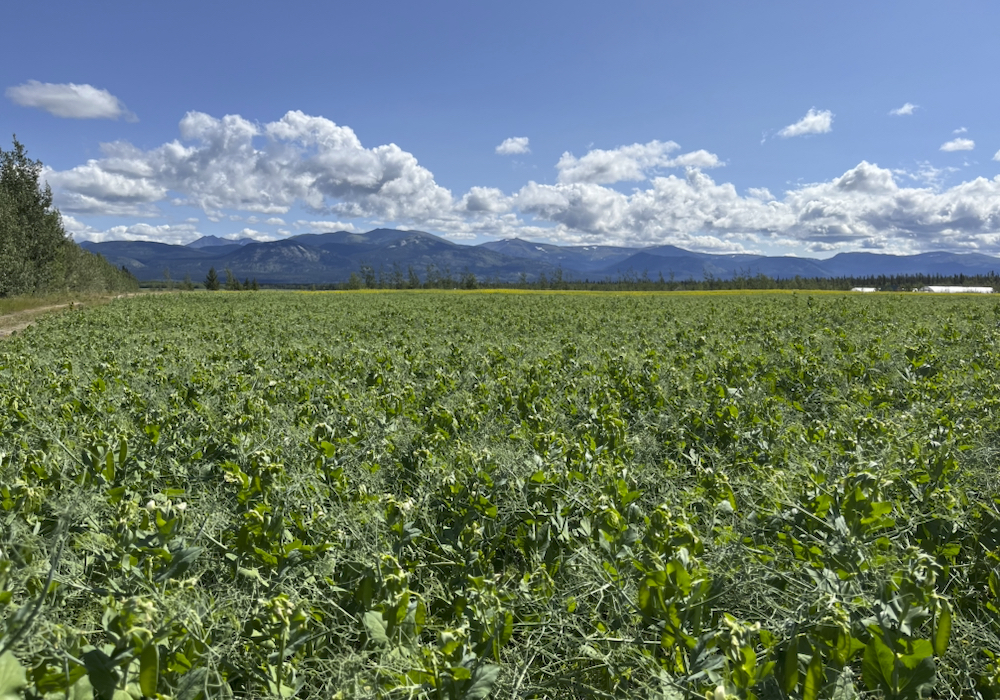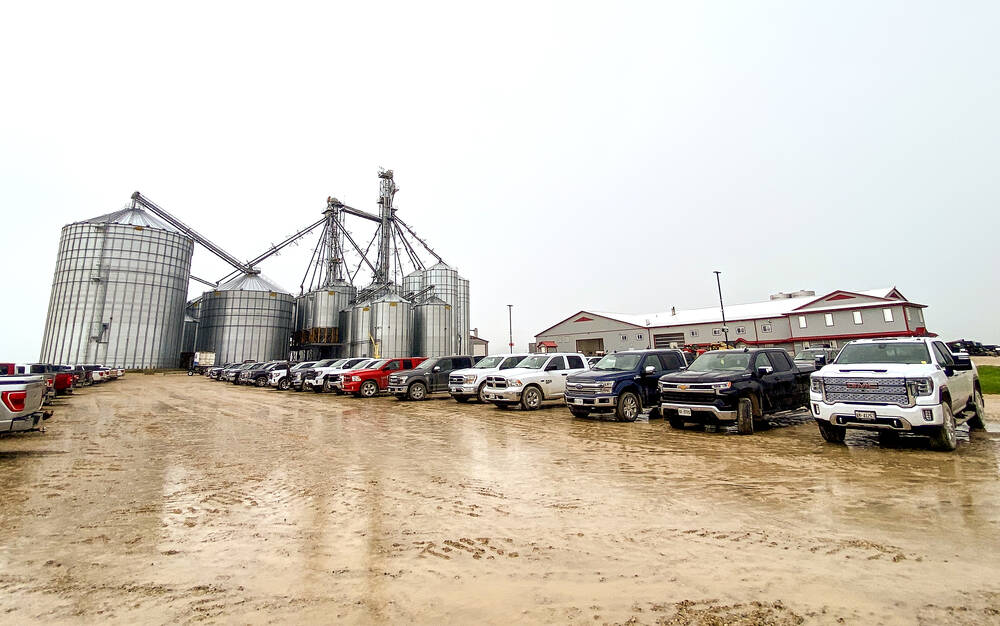Yukon farming expands despite challenges

Glacier FarmMedia – Farming in the Yukon is filled with obstacles and opportunities, says the territory’s agriculture minister John Streicker.
Read Also


Northern land prices make farm expansion attractive
Highland Custom Farming is expanding its successful model to Iroquois Falls where land is affordable, providing the next generation of farmers with options.
People are increasingly giving it a try, clearing land to plant vegetables or establish livestock operations.
There’s more demand for local food, and more entrepreneurs in the Yukon are working to fill that demand.
He told the Canadian Federation of Agriculture summer board meeting that farm capital has risen by 30 per cent in the last six years.
There has been a strong increase in providing local food to a captive market.
With about 45,000 people in the territory and 30,000 of those in the capital city, exports are not on the agenda.
“We’ve got a value-added sector which is growing, producing flour products, egg products, dairy products,” Streicker said. “Just recently, potato chips won an award in our business community.”
Meat, dried berries, mushrooms and fruit wine are being made in a place few would consider an agricultural area.
Yet agriculture has been part of the Yukon since the Gold Rush of 1898.
“They were having market gardens to supply the stampeders,” said Yukon Agricultural Association (YAA) president Cain Vangel.
“And they were having cattle drives up from the south to meet the meat supply.”
Statistics Canada says there are now about 87 farms in the territory, but Vangel said the number is likely closer to 200.
About 66 per cent of sales are direct to consumer through farmers market stands and the farmgate, but there is an increase in the wholesale market. Some farms are supplying vegetables, fruit and other products to grocery stores.
“Over the last number of years we’ve had an increase in abattoir services in Whitehorse, which is sort of allowing a lot more meat to get into the market,” Vangel said.
He too said value-added is growing, and many restaurants are using local produce.
The YAA was established in 1972 and incorporated in 1974. It helps farmers with relatively small acreage by maintaining five rental implements such as a manure spreader and a no-till drill.
“It’s a cost-effective way for folks to access machinery without the long-term commitment of ownership, catered to the use of producers who may require certain equipment for short periods of time,” he said.
That equipment is getting older and needs replacing.
The YAA has a long-term lease on property north of Whitehorse where it established a fairground.
“It’s envisioned to serve a crucial role as a gathering place for the agriculture community,” Vangel said.
They are working to build an emergency livestock handling system on the property that could be used in case of fire or flood.
Vangel said the YAA held its first big fair just before COVID-19, so it lost a bit of steam and is only now regaining momentum.
He said the modest scale of Yukon agriculture presents challenges in management, marketing, mental wellness, sustainable resources and collaboration.
Supply management isn’t an option because the dairy, poultry and egg sectors are so small. They aren’t exporting either. However, all kinds of local products, including milk and eggs, are available in grocery stores.
Vangel said farmers don’t always think the government is listening to them.
Elk damage, from animals introduced several decades ago, is an ongoing concern and battle.
“Another issue we have is that we don’t have any CFIA presence,” he said, so there is no way to get inspection or licensing.
There is no large animal veterinarian.
“The government has put together a bit of a vet program for getting your vaccines or some medications, but there’s absolutely nothing for emergency services,” he said.
Public services are trying to catch up to the agricultural activity in Yukon but are still limited. Vangel noted only five or six people work in agriculture for the territorial government.
Many existing policies are vague and restrictive, he said, and regulations are outdated.
Although support for agriculture appears strong, when the government implemented a land act review in 2022, the sector wasn’t at the table and the industry wasn’t included in how public land could be used. Vangel said only two per cent of land is privately owned, and gaining access to crown land can take years.
CFA president Keith Currie said those who toured Yukon farms ahead of the meeting could see how challenging it is to farm.
“We were at a farm yesterday, talking about the wildfire and how it was coming close, and their solution was, for their own safety and animal safety, to turn on all the irrigation, flood the fields, get the cattle in the middle of the field and hope like heck they survived. Most of us don’t have to think about things like that,” he said.
Still, there is a lot of optimism in the sector.
Hay production is a big contributor, greenhouse production is expanding and others are producing crops like canola and potatoes, even in the short growing season.
Streicker said expansion is challenged by climate, remoteness, infrastructure limitations, policy gaps and high production costs.
“(Farmers) must manage their entire supply chain, managing labour, developing their marketing plan, meeting regulatory requirements, delivering product to customers,” Streicker said.
Despite these challenges, farmers can thrive because Yukoners are willing to pay premiums for locally grown food.
Streicker said there is a deep sense of pride among residents that farmers can provide what they need and want.
One thing they won’t supply is wild boar meat; the Yukon government has banned development of those farms.
Streicker said climate change is disrupting supply chains with the increased frequency and intensity of natural disasters, and the territory is limited in its ability to respond.
There is less support and expertise available to territorial farmers overall, although the former Yukon College became Yukon University in 2020, and that may lead to more research and extension for northern farming.
Source: Farmtario.com

